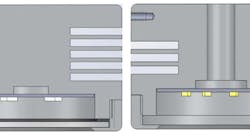The colors of nature are a reminder how important color is in our lives. The subtle color variations of an iris blooming in the yard on a clear day can easily be seen and appreciated. The same iris in a vase at the office might not look quite as colorful. Why? Because it is the light source illuminating an object that determines how well humans see color. Light sources with a high color rendition are desirable in various color-critical applications and in business opportunities such as healthcare, photography, cutting edge-video production, commercial display, printing and manufacture.
For the past 40 years, to measure the ability of a light source to reveal colors of various objects faithfully in comparison with an ideal or natural light source, we have used the method of color rendering index (CRI, refer to CIE 13.2-1974). Now, scientific advances to new stages of artificial light sources have exhibited better performance in visible optical radiation, color rendition and energy savings. At the same time, the metric of CRI is also been criticized in that the calculating the arithmetic mean of the errors diminishes the contribution of any single large deviation. Two light sources with similar CRI may perform significantly differently if one has a particularly low special CRI in a spectral band that is important for the application. We may explore tradeoffs between fidelity, gamut and color vector graphic.
The Technical Memorandum TM-30-15, the new method published by IES and proposed to the CIE, is a new method for evaluating a light source's ability to render color. While TM-30-15 is an initial step forward in quantifying color rendering for LED test systems and other light source research, it should be noted that the consistency and long term stability of the light source color point is critical for consistent and uniform appearance of lightly colored and white objects.
"UPRtek supports the research and the concept of providing information on the color gamut/saturation of LED light sources," Edward Tu said, the CEO of UPRtek. "Light" applications are everywhere; as long as a place has humans, there will be a need for light. Since LED lighting technology could be the most important technology of the 21st century, UPRtek is well prepared and ready to keep going into unknown markets of the LED/OLED field.
Contact:
+886-37-580885 ext.8100 and 8103
E-mail:
[email protected]Web site:
www.uprtek.comLocate more LED test equipment vendors in the LEDs Magazine Suppliers Directory
Submit new products, case studies/projects, and other press releases at http://www.ledsmagazine.com/content/leds/en/addcontent.html.
More from UPRTek:
UPRTek offers 3D lighting design services using Dialux software
UPRTek provides MK light meter to measure flicker from LED lighting




